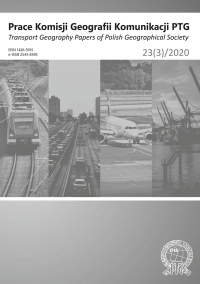Comparative analysis of the accessibility and connectivity of public transport in the city districts of Krakow
Comparative analysis of the accessibility and connectivity of public transport in the city districts of Krakow
Author(s): Martin BártaSubject(s): Regional Geography, Rural and urban sociology, Socio-Economic Research, Transport / Logistics
Published by: Wydawnictwo Uniwersytetu Jagiellońskiego
Keywords: comparative analysis; Krakow; public transport indicators; connectivity; accessibility;
Summary/Abstract: A properly functioning public transport is one of the most important components of urban mobility for the population. Due to spatial inhomogeneity and overall socio-economic differences within a city, there are often considerable disproportions in the quality of transport services within its districts. Also, the city of Krakow is no exception in this case. For a comparison of public transport accessibility in 18 Krakow districts, 7 major quantitative and 5 minor indicators were created. These indicators include the most important characteristics of transport services such as accessibility, frequency, connectivity of connections, and ratios of tram public transport subsystem. The resulting values give a fairly comprehensive picture of the quality of the transport services. Overall higher values for most indicators occur in the central districts of the city. However, due to the complexity of the observed characteristics, it is possible to discover significant differences in the structure of individual indicators. Peripheral districts reach higher amplitudes, which means that in some aspect they have even better transport services than the city center. Yet, at the same time, we also find opposite extremes here, highly below-average values for most other indicators. A detailed analysis of the results provides a unique perspective on the disparities among districts. It can also serve for specific identification of strengths and weaknesses of transport services and its possible optimization.
Journal: Prace Komisji Geografii Komunikacji PTG
- Issue Year: 23/2020
- Issue No: 3
- Page Range: 7-14
- Page Count: 8
- Language: English

